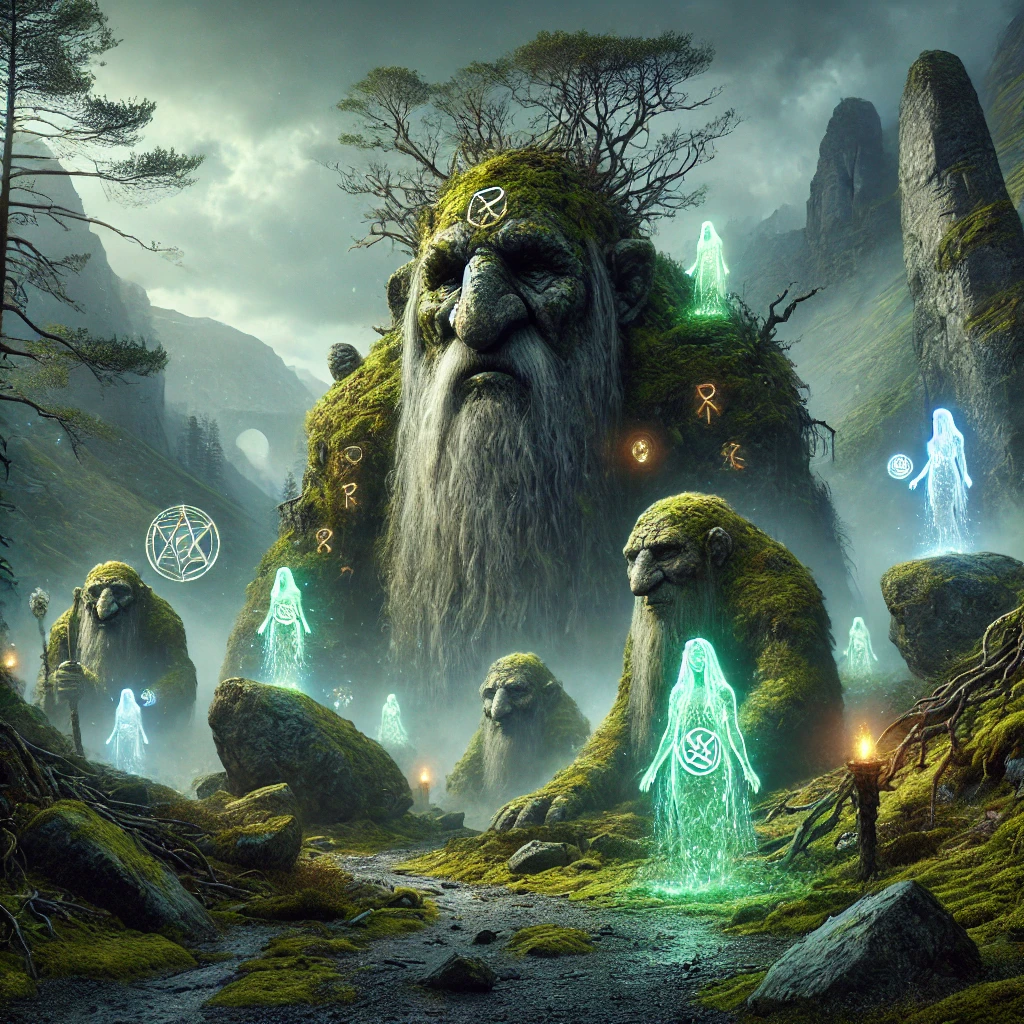Overview
Trolls are mythological beings found predominantly in Norse and Scandinavian folklore, often depicted as large, powerful, and somewhat mischievous creatures associated with the Earth. Historically, they are seen as guardians of certain natural places, such as mountains, forests, and underground realms. Trolls embody the raw, untamed forces of nature and serve as protectors of sacred Earth energies, reminding humans of the mysterious and often hidden powers within the natural world.
Characteristics of Trolls
1. Appearance and Attributes
- Physicality: Trolls vary widely in descriptions, from towering giants to small, gnome-like beings. They are often portrayed with rugged, stony features that mimic the landscape they inhabit.
- Abilities: Many trolls have unique powers tied to the natural elements, such as controlling the weather, shifting landscapes, or influencing the growth of plants.
2. Habits and Lifestyles
- Solitary Guardians: Trolls are typically solitary creatures, living alone or in small family groups, deeply connected to their specific natural domain.
- Nocturnal: They are often considered nocturnal, shying away from human contact and emerging during the twilight hours.
Cultural Perspectives on Trolls
1. Norse and Scandinavian Mythology
- In these traditions, trolls are often seen as dwellers of isolated rocks, mountains, or caves. They are sometimes helpful, other times menacing, but always deeply woven into the fabric of the land.
- Folk Tales: Numerous stories depict trolls as cunning, with a particular aversion to church bells and Christian symbols, reflecting the cultural shift from paganism to Christianity.
2. Modern Interpretations
- Literature and Media: Modern portrayals often soften trolls’ images, depicting them as misunderstood beings with complex societies and cultures.
- Environmental Symbolism: In contemporary spiritual and ecological contexts, trolls are sometimes used as symbols of environmental protection and resistance against the degradation of natural sites.
Spiritual Significance and Roles
1. Guardians of Sacred Sites
- Protection of Energy Vortexes: Trolls are considered guardians of places with intense spiritual or Earth energies, such as ley lines, sacred springs, or mineral deposits.
- Custodians of Ancient Wisdom: They are believed to hold knowledge about the Earth’s history and the deeper magical practices associated with natural energies.
2. Lessons from Trolls
- Respect for Nature: Trolls teach the importance of respecting and preserving the natural world, especially the less disturbed, wild places of the Earth.
- Balance and Boundaries: Their stories often highlight the need for maintaining a respectful balance with nature, setting boundaries between the human-built environments and the wild.
Engaging with Troll Energy
1. Visiting Natural Habitats
- To connect with troll energy, one might visit ancient forests, mountainous regions, or caves—places traditionally associated with trolls, offering respect and openness to the energies present.
2. Meditation and Visualization
- Visualizing trolls during meditations can help tap into their Earth-connected wisdom and grounding energies, especially when seeking protection for natural areas or personal strength.
3. Environmental Stewardship
- Inspired by trolls’ role as Earth guardians, individuals might engage in ecological conservation efforts, land reclamation projects, or activism to protect endangered natural sites.
Conclusion
Trolls, as Earth spirit guardians, offer a rich tapestry of cultural heritage and ecological symbolism. Whether through folklore, spiritual practices, or ecological advocacy, trolls continue to inspire a deeper connection to the Earth and its sacred places, reminding us of the power and mystery of the natural world. Their lore encourages us to approach nature with reverence, curiosity, and a commitment to preservation.

